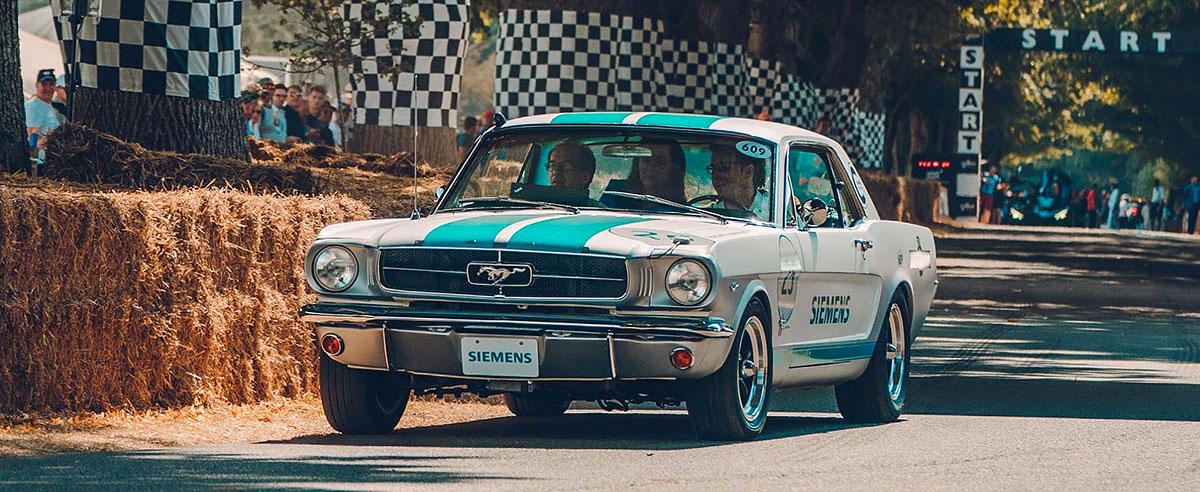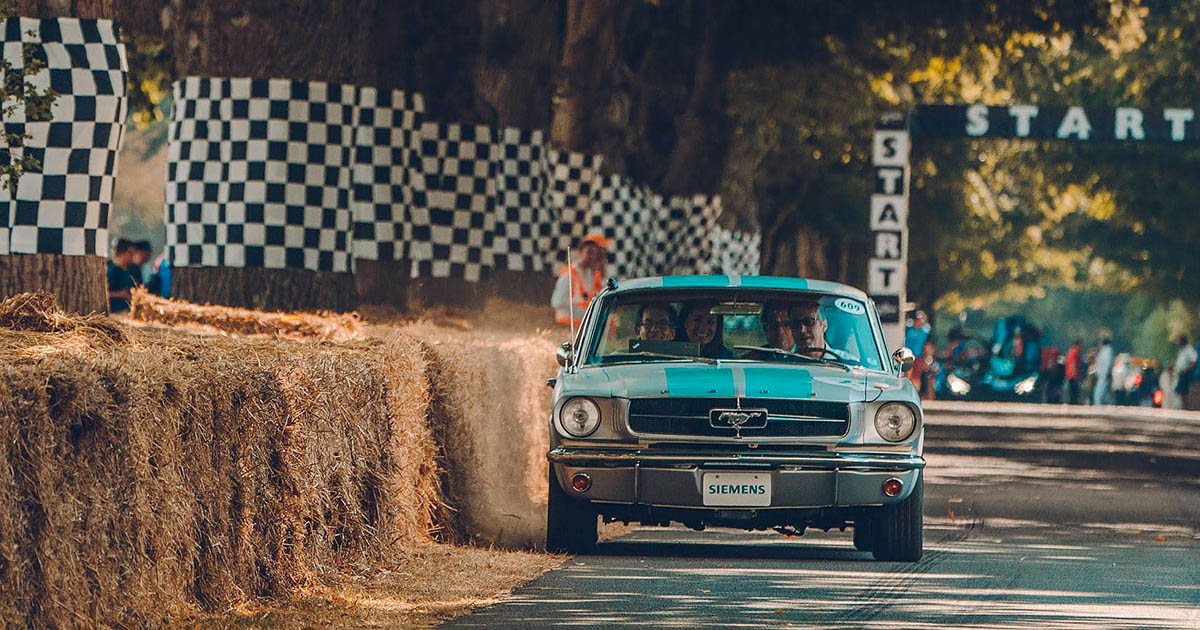We rode up the Goodwood hill in *that* autonomous Mustang

Many weird and wonderful things happened at this year’s Goodwood Festival of Speed, but one that captured everyone’s attention a little more than others was the Siemens Ford Mustang. While it’s a classic 1965 ‘Stang on the outside, it’s a self-driving car beneath. And if the social media reaction after its first runs up the hill was anything to go by, not an especially good self-driving car.
It weaved around. It skimmed the grass. At one point it nudged itself into a hay bale, before its driver steered it back onto the straight and (very) narrow. Yes, there was still an engineer behind the wheel, just in case. Good job, it seems.
All the while, the autonomous Roborace car blitzed its way up the hill at seemingly twice the speed and with 100 per cent less driver on board. I watched it freakishly buzz past Goodwood House mere minutes before heading over for my passenger ride in the Mustang, its stinging online criticism buzzing through my head.
It wasn’t nearly as scary as you might have been led to believe, a 20mph limit no doubt helping. But it was a long way from the finesse and wow factor of the Roboracer. While the Siemens Mustang deployed a bunch of tech, it largely relied on a GPS map of the hillclimb that’d been programmed into its brain. There was no live ‘reading’ of the circuit to make any decisions ad-hoc.

We hit problems immediately, as the long crawl through the hillclimb’s waiting area left us under the trees for too long. The car’s sensors lost their signal and we had to wait in a clearing as it regained enough to drive itself up the hill, a moment not unlike loitering outside of the pub to muster enough phone signal to text your mate. It was the same clearing that – seconds earlier – the 2018 Bullitt Mustang had used to do a huge donut, warming its tyres for the hillclimb ahead. Different Mustang entirely, this.
With enough signal on board, though, we pulled away cleanly and assertively, and the car steered smoothly enough. At least to begin with. Once we got in front of the house, though, it weaved around like in all the clips you’ve seen. That’s intentional, the engineers told us, so that spectators could see the car actively steering itself, something driving in a straight line wouldn’t show. Oh, and that hay bale incident from its initial was a mechanical steering fault.
Even with those claims in mind, the car’s application of throttle wasn’t especially smooth, betraying the issue of basing your autonomous car on something as old as this. Even at their prime, Mustangs were never paragons of steering urgency or throttle sharpness, and trying to hook up electronic systems that rely on millimetric accuracy to a 53-year-old example was never going to be an easy fit.
Which shows how much work Cranfield University, who worked with Siemens on the project, had to do. And how well they did making it functional. That the Mustang made it up the whole hillclimb without incident on our run (the video’s above) is worthy of applause, and you really can’t knock the bravery of showing off an after-hours student project like this in front of such a large audience. An enthusiast audience that’s probably not waiting to accept self-driving cars with open arms, don’t forget.
It just looks a bit naïve doing so, especially when the Roboracer did a better job of making autonomy easy to swallow - and potentially quite exciting - an hour before we went up the hill. Our ride in the Siemens Mustang wasn’t scary, but nor was it particularly ground-breaking. Shame.

